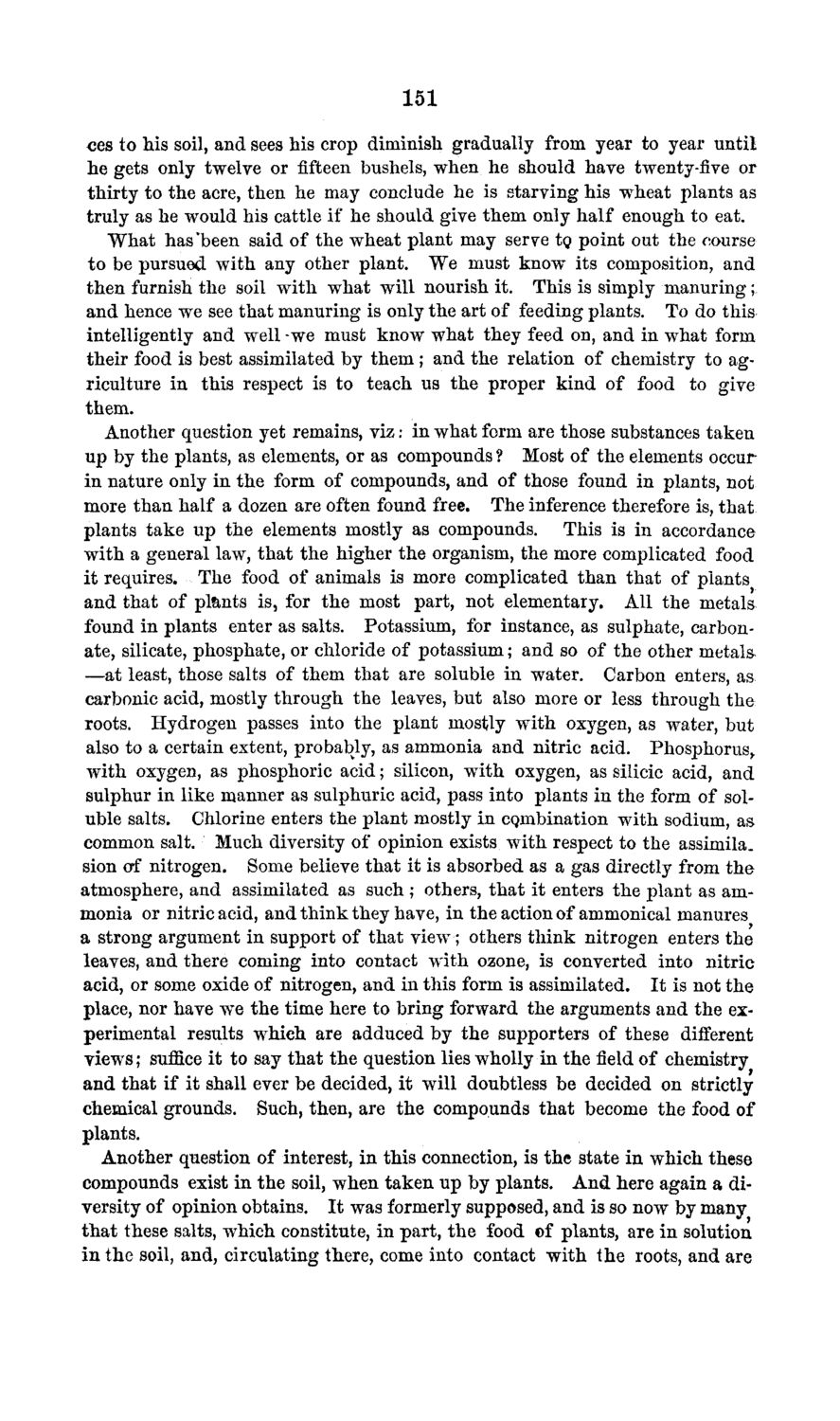| |
| |
Caption: Board of Trustees Minutes - 1869
This is a reduced-resolution page image for fast online browsing.

EXTRACTED TEXT FROM PAGE:
151 oes to his soil, and sees his crop diminish gradually from year to year until he gets only twelve or fifteen bushels, when he should have twenty-five or thirty to the acre, then he may conclude he is starving his wheat plants as truly as he would his cattle if he should give them only half enough to eat. What has "been said of the wheat plant may serve tg point out the course to be pursued with any other plant. We must know its composition, and then furnish the soil with what will nourish it. This is simply manuring \, and hence we see that manuring is only the art of feeding plants. To do this intelligently and well -we must know what they feed on, and in what form their food is best assimilated by them; and the relation of chemistry to agriculture in this respect is to teach us the proper kind of food to give them. Another question yet remains, viz: in what form are those substances taken up by the plants, as elements, or as compounds ? Most of the elements occurin nature only in the form of compounds, and of those found in plants, not more than half a dozen are often found free. The inference therefore is, that plants take up the elements mostly as compounds. This is in accordance with a general law, that the higher the organism, the more complicated food it requires. The food of animals is more complicated than that of plants and that of plants is, for the most part, not elementary. All the metals found in plants enter as salts. Potassium, for instance, as sulphate, carbonate, silicate, phosphate, or chloride of potassium; and so of the other metals —at least, those salts of them that are soluble in water. Carbon enters, as carbonic acid, mostly through the leaves, but also more or less through the roots. Hydrogen passes into the plant mostly with oxygen, as water, but also to a certain extent, probably, as ammonia and nitric acid. Phosphorus, with oxygen, as phosphoric acid; silicon, with oxygen, as silicic acid, and sulphur in like manner as sulphuric acid, pass into plants in the form of soluble salts. Chlorine enters the plant mostly in CQmbination with sodium, as common salt. Much diversity of opinion exists with respect to the assimila. sion of nitrogen. Some believe that it is absorbed as a gas directly from the atmosphere, and assimilated as such ; others, that it enters the plant as ammonia or nitric acid, and think they have, in the action of ammonical manures a strong argument in support of that view; others think nitrogen enters the leaves, and there coming into contact with ozone, is converted into nitric acid, or some oxide of nitrogen, and in this form is assimilated. It is not the place, nor have w^e the time here to bring forward the arguments and the experimental results whieh are adduced by the supporters of these different views; suffice it to say that the question lies wholly in the field of chemistry and that if it shall ever be decided, it will doubtless be decided on strictly chemical grounds. Such, then, are the compounds that become the food of plants. Another question of interest, in this connection, is the state in which these compounds exist in the soil, when taken up by plants. And here again a diversity of opinion obtains. It was formerly supposed, and is so now by many that these salts, which constitute, in part, the food of plants, are in solution in the soil, and, circulating there, come into contact with the roots, and are
| |